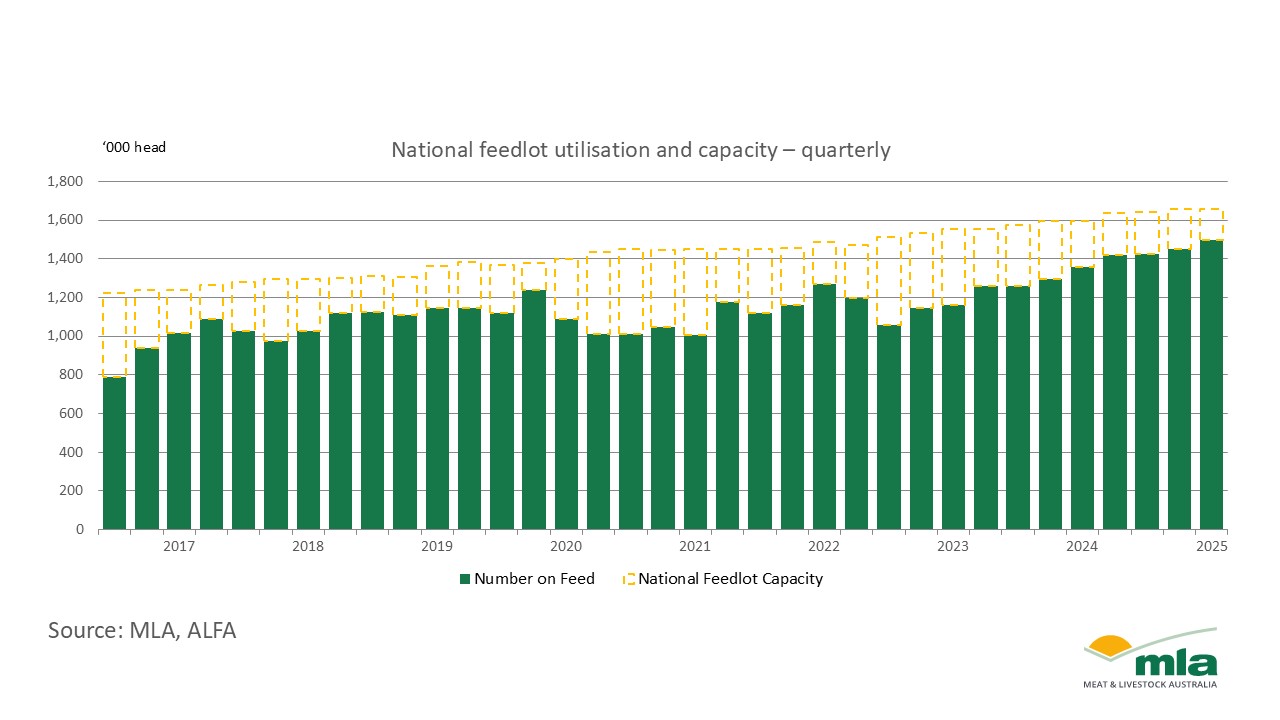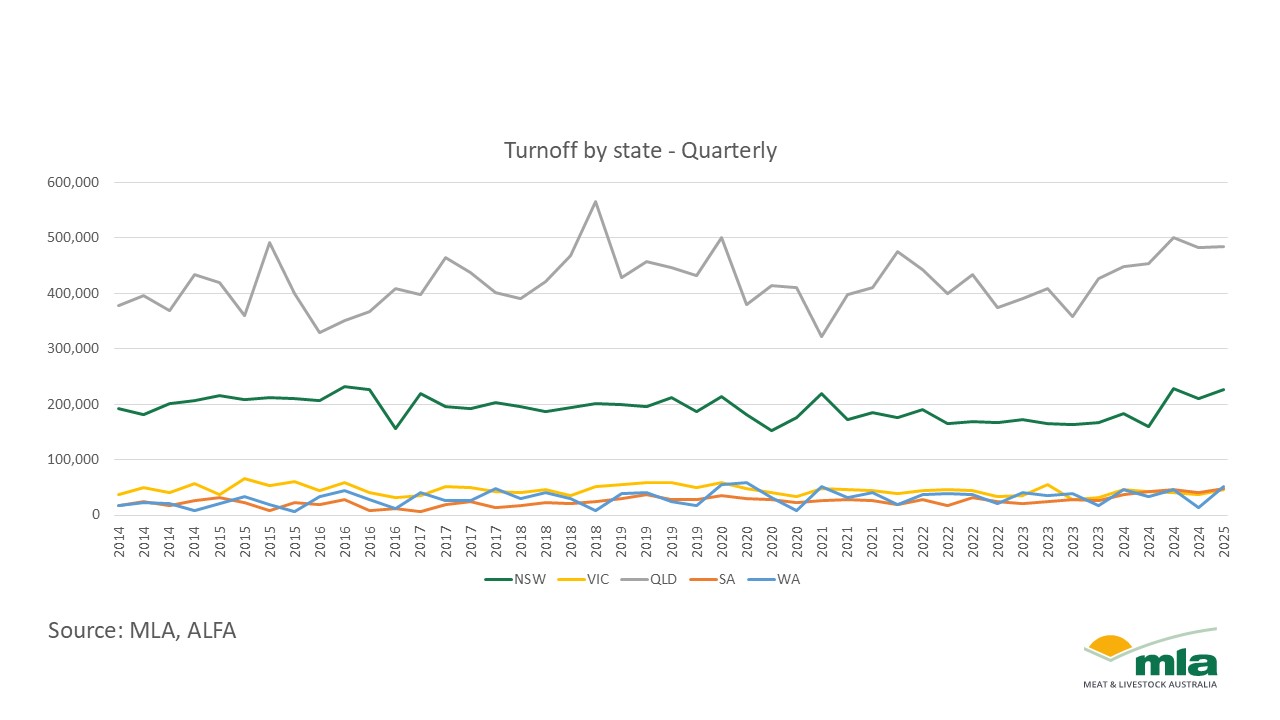Are feedlots filling up?
This week the Australian Lot Feeders’ Association (ALFA) and Meat & Livestock Australia (MLA) released results from the March quarter National Feedlot Survey. Conducted quarterly across NFAS-accredited feedlots, the survey captures key data on capacity, turn-off and number of cattle on feed. The findings are published alongside MLA’s Lot Feeding Brief.
Lot feeding holds strong amid seasonal split and export demand
The latest results highlight the adaptability of the lot feeding sector and how it can respond to shifting seasonal and market conditions. Australia is currently facing a stark contrast in seasonal conditions: the south is experiencing sustained dry weather, with SA, Victoria, and parts of NSW experiencing poor pasture and feed availability. As a result, many producers have turned to feedlots to finish cattle to hit target weights through short-feeding programs.
In contrast, conditions in the north have held up well. Late wet-season rainfall has supported grassfed backgrounding and stockfeed production across northern NSW and Queensland. This has allowed northern feedlots to run long-fed, high-value programs and take on cattle from drier southern regions for finishing.
Global demand for grainfed beef continues to underpin confidence in the grainfed sector. As noted in last week’s article Global demand for grainfed beef climbs, Australia is exporting record volumes of grainfed beef to major markets, with China remaining the top destination, followed by Japan and Korea. This consistent global demand is reinforcing strong performance from the feedlot sector and driving continued throughput.

What the data tells us
The March quarter marked the first time in 12 months that national feedlot capacity didn’t expand – instead, it edged back slightly by 0.1% to 1,656,501 head. However, production lifted, with 859,000 head turned off – a 9% increase from the previous quarter.
Despite the lift in turn-off, demand for pen space remained firm. The number of cattle on feed rose to 1.5 million head, up 3% from the previous quarter and 11% higher than March 2024 figures. National utilisation reached a record 90%, with Queensland and NSW recording state-level highs.

These figures show a resilient, responsive feedlot sector that can adjust to seasonal pressures, absorbing supply and supporting market demand.
Queensland is Australia’s lot feeding capital, with 56% of all turn-off coming from the state. Conditions across the state have remained relatively strong compared to others, enabling high utilisation rates. Feedlots lifted to near record numbers on feed, up 1% to 851,000 head, while turn-off over the quarter remained stable at 485,000 head.
NSW is experiencing differing conditions, with southern regions drying out and northern regions reaping the benefits from the late summer rainfall. Record utilisation and numbers on feed in NSW reflect the reliance on feedlots in the state to finish stock on grain. Turn-off lifted 8% to 227,000 head while the sector saw the second largest number on feed of 443,000, up 6%. This led to a record utilisation of 91% from 487,000 head on feed.
SA and Victorian feedlots experienced similar movements due to dry conditions encouraging short-fed finishing programs. Utilisation in SA lifted to 92% despite a record turn-off of 49,000 head. Numbers on feed lifted slightly by 1% to 71,000 head while capacity remained stable at 78,000 head. Victorian utilisation grew 82% and numbers on feed lifted 4% to 70,000 head, despite turn-off lifting to 46,580 head.

As a largely seasonal sector – with March as the traditional peak – WA feedlot lifted to 51,235 head and was still 10% above the same quarter in the previous year. Numbers on feed lifted 5% in March 2024 to 63,000 head, with utilisation up to 71% while capacity remained flat at 89,000.
The Australian Lot Feeding Brief details national and state data from the ALFA and MLA survey, as well as grainfed export volumes and the domestic feeder market.
Read the full Lot Feeding Brief.
Attribute to: Erin Lukey, MLA Senior Market Information Analyst



